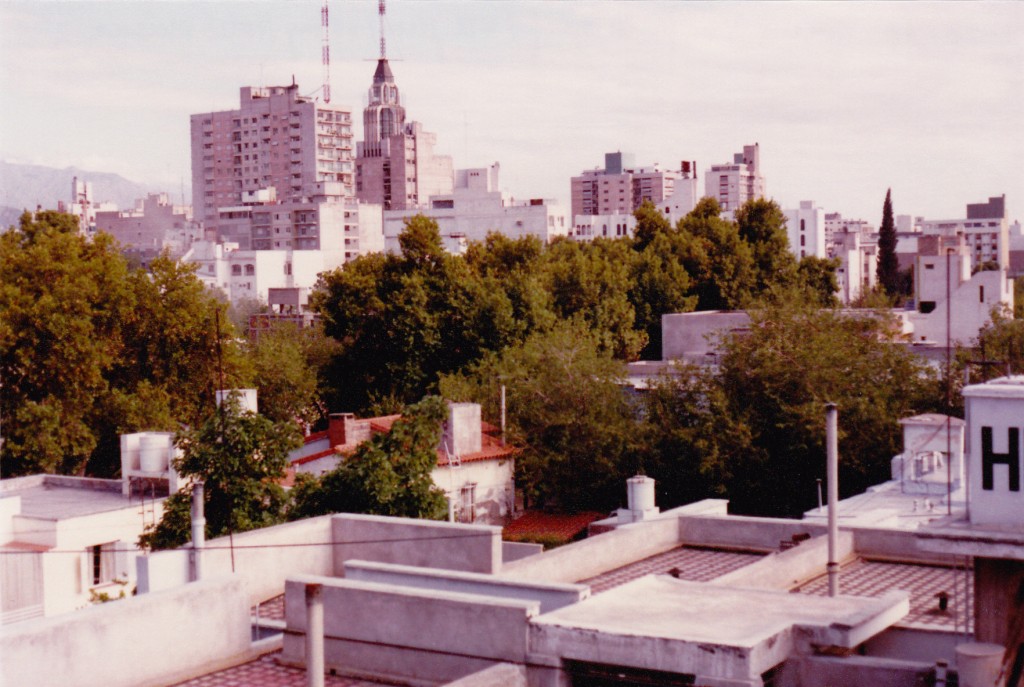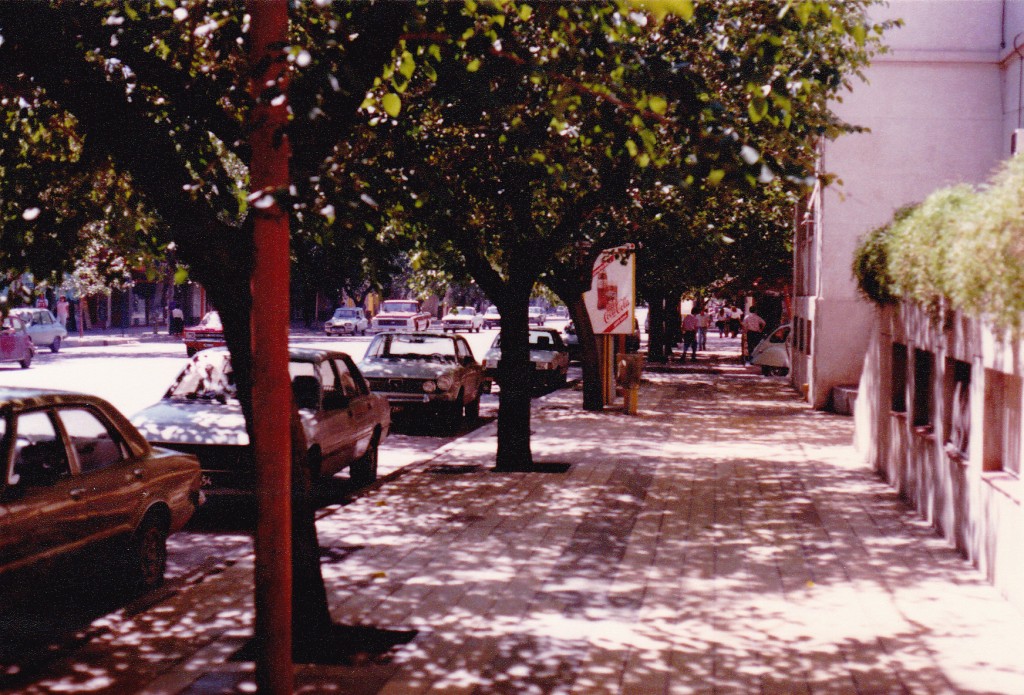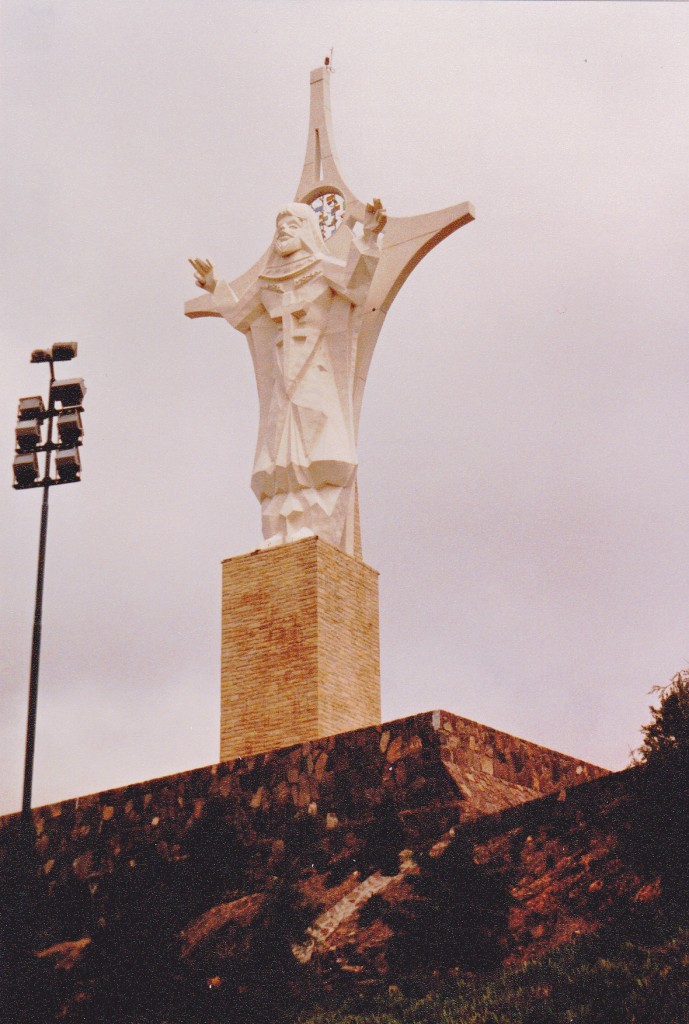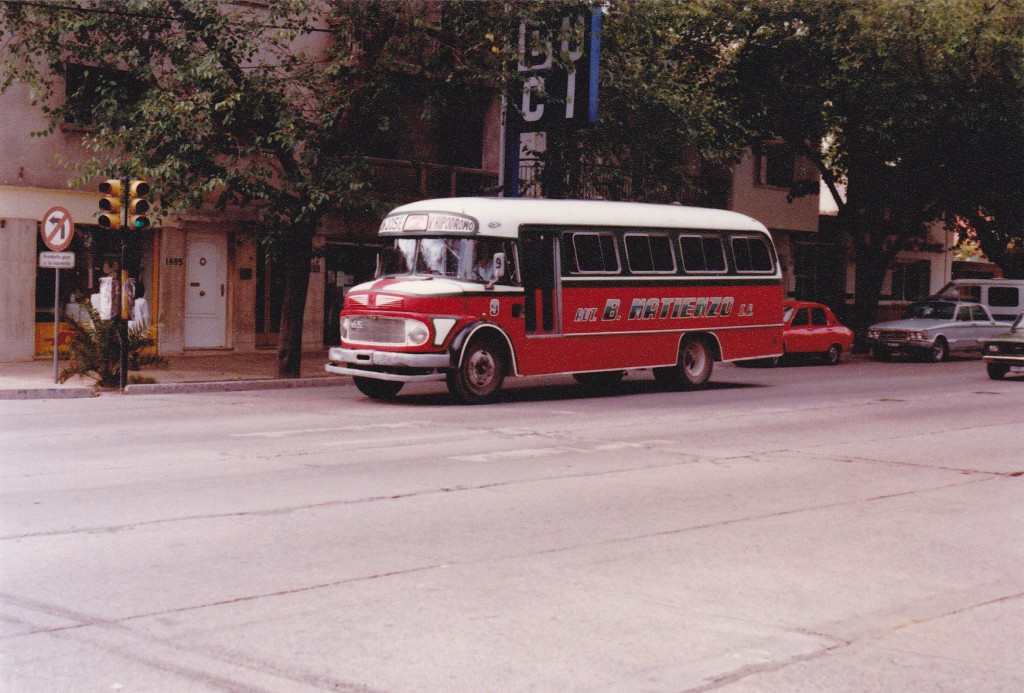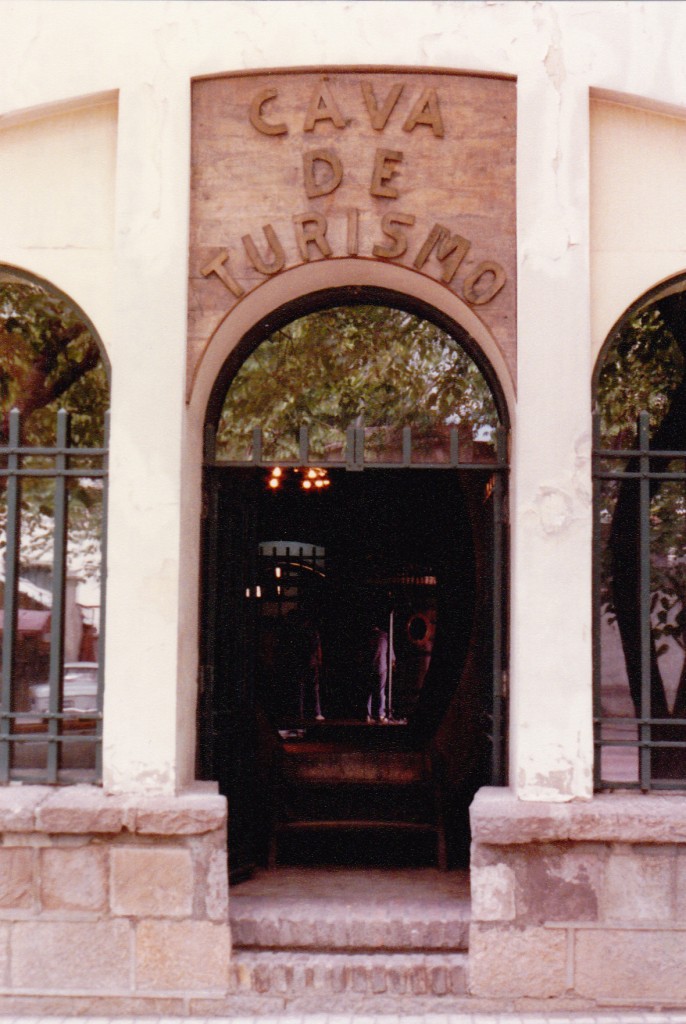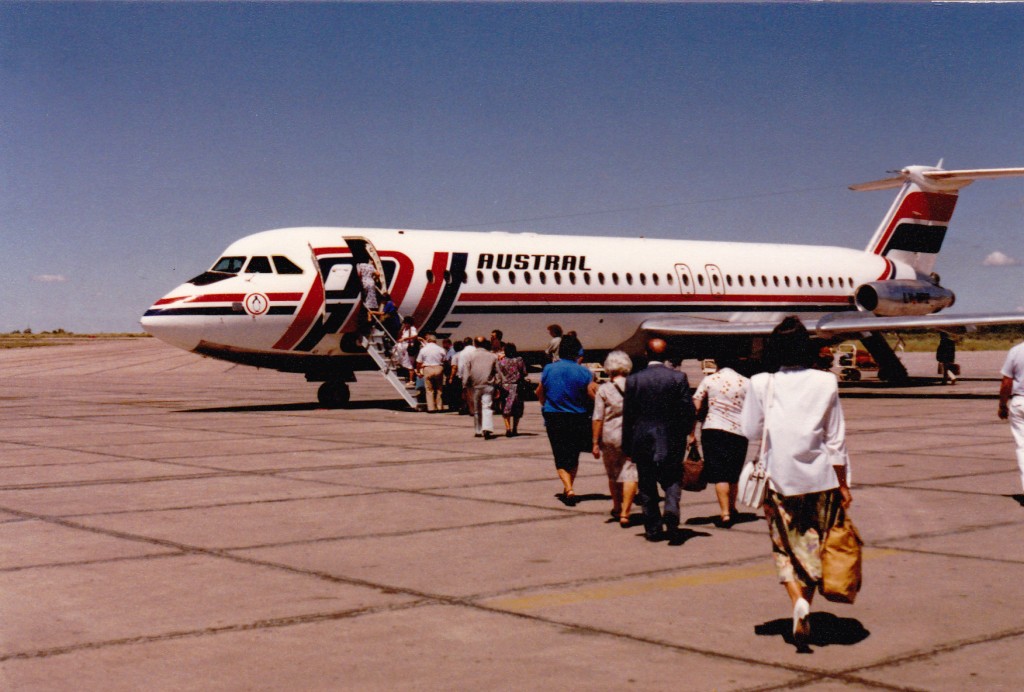When you spend a long time on a big mountain like Aconcagua, you forget how a lot of things were – the smell of plants, the sound of traffic, the luxury of a real bed, having a proper hot meal. It’s a real grounding experience, and you return from it with a new-found appreciation for many things you previously took for granted.
Once back in Mendoza, I took a cab to the Hotel Milena. Right away, one change was very apparent – the exchange rate had soared to 3,900A per dollar. A nice room with a view (not in the basement!) was now 30,000 Australes, or $7.70 US per night. I gladly paid it. The desk clerk informed me that Rodolfo had dropped by two days prior, wondering if they had seen any sign of me. I got cleaned up, which included losing a month’s growth of beard, then headed out to meet Peter. He knew of a restaurant called Señor Cheff, where he promised a meal I wouldn’t soon forget, so away we went. In keeping with local custom, the place didn’t even open for dinner until 10:00 p.m. We started off with a bottle of good Mendoza wine, which cost us 41 cents US! Our meal was outstanding, and consisted of the following: tomato stuffed with tuna and rice; soup and fresh bread; roasted chicken; a nice green salad; French fries; flan for dessert. The total cost for this feast was $1.61 US each. It was if I had died and gone to heaven.
Completely sated, we strolled the pedestrian thoroughfares downtown, amazed at the beauty of the Argentine people and their laid-back outlook on life. Even at 1:00 a.m. the streets were packed with thousands of Mendocinos enjoying the beautiful summer evening. I didn’t get to bed until after 2:00 a.m. Ditto for the next day.
Monday, February 19th – on this, my third day back in the city, I went to exchange more money. The rate had risen to 4,200A to the dollar, and the Casa de Cambio was crowded, mostly with Argentines, who seemed to be speculating on the future of their currency. The desk clerk at my hotel told me that my room rate was fixed at 30,000A per day, so now my cost was down to $7.14 per day. The more the Austral dropped, the cheaper my room became. Today, I had a nice reunion with Rodolfo Molesini and his son Fito. While at his office, Rodolfo re-confirmed my airline flights back home. His family had shown me such friendship, which I am pleased to say has survived strongly to this very day.
At the time of this story, early 1990, the easiest way for a traveler to make an international phone call from Argentina was to go to a special place set up just for that purpose. I caught a cab to such an establishment – the operator quickly set up the call for me, and I called my home in Tucson, Arizona. My wife answered, and when she realized it was me on the other end of the poor connection, she burst into tears. Gee, I thought, she must have really missed me! It turns out that there was a different reason for her reaction. She said that we had made a very specific arrangement, that if she had not heard from me by a certain date then she was to contact the authorities and have them determine what had happened to me on the mountain. That very evening was the deadline! I had no recollection whatsoever of any such arrangement, although I am sure she was correct.
It is now a well-documented fact that prolonged exposure to high altitudes, especially if attained too quickly, can cause irreversible brain damage. There is some fascinating information in this article about what actually happens. Maybe my brain had become more like a Swiss cheese while on the mountain. In any case, to this day I have absolutely no memory of any such arrangement she and I had made.
The next day, I met several members of the U.S. cycling team who were staying at my hotel – they were in Argentina to compete in several races. One of the women had a bad case of Montezuma’s revenge and was really suffering. Fortunately for her, I had a pre-scription medicine (one of several my doctor back home had written for me) meant to cure severe diarrhea, so I gave her my bottle of tiny white pills and, before you know it, she was right as rain.
I changed some more money today, at 4,400A per dollar – the weakest the Argentine currency has ever been. Fito and I then rode on a city bus to the zoo. I mention this only because the bus fare was strictly regulated at a rate of 380A, or less than 9 cents per ride! Zoo admission was about the same price. Since it was nearby, we took a cab over to a famous statue called Cristo de los Cerros, which was featured on an Argentine postage stamp. The name roughly translates as ” Christ of the Peaks”, and it speaks to the mountaineering culture that pervades the lives of the people of Mendoza.
An odd after-effect of being on the mountain was that my feet became very sore and swollen after very little walking. I’m not sure why it was happening, but at times it became so painful that I didn’t want to do anything but just hole up in my hotel room.
The next day, Fito and I went to see the flag which San Martin carried across the Andes in 1818 when he went to liberate Chile from Spain. I was glad to soak up some local history while here. Much of my time during these days in the city was spent eating lots of food. I was happy to discover that beer only came in one-liter bottles, not the little 12-ounce ones I usually drank back home. And I have to mention the ice cream. What a treat – the best ever, rich and creamy, in shops open until all hours, and so cheap!
Friday, February 23rd – I discovered that two friends from Aconcagua were staying in my hotel, Rick and Deb from Idaho. It was a great reunion, celebrated over breakfast. They were shocked to hear about how much time I had spent on the mountain without summitting. I told them about the bad weather and how it seemed like it was never going to end, and how everybody was being turned back. It was hard to believe that it had only been three weeks since we had said goodbye on Aconcagua – it felt more like a year. It turns out they were flying out that same day, so our visit wasn’t a long one before they had to leave to head to the airport. There was one more touristy thing I wanted to do before leaving this beautiful city. The province of Mendoza is world-famous for its wine, so I just had to learn a bit more about how it was made. Fito and I caught a bus to a major winery, the oldest in the region, for a tour – it dated back to 1840. To give you an idea of how important the wine-making industry is here, there are over 1,100 wineries in this province alone. The art and science of making wine is a major subject taught at local universities.
After the tour, we stopped in at the home of his parents. I had bought bouquets of flowers as a thank-you for his mother and grandmother, and I felt quite emotional saying goodbye to everyone. It was very late by the time I got back to the hotel and to bed.
Saturday, February 24th – my last day of many at the hotel. After checking out, I took a cab to the airport. The cabbie was a woman, she said one of only five among the 600 drivers in the city. She got me there on time, but my plane was late in leaving. We finally took off and, after a 40-minute flight, made a brief stop in Córdoba, Argentina’s second-largest city.
The next leg of the flight was socked in all the way to the capital, and when we landed it was pouring rain, so much so that city streets were flooded. I ended up taking a cab the 48 km. to the international airport. It didn’t take long to check in, and the 747 took off on time. They pampered us with a good meal and plenty of wine on the four-hour flight to Lima, Peru where we had a one-hour stopover. We were back on the plane by 2:00 a.m. and had another meal and a movie during the five-hour flight to Mexico City. Wouldn’t you know it, we had another one-hour layover in that ugly room for international through-passengers in their airport. Once back on our plane, it was three hours more before we arrived in Los Angeles, with breakfast en route.
In 13 1/2 hours of flying, the airline had fed us six times. We landed in L.A. at 7:00 a.m. After clearing U.S. Customs, I had second breakfast. Now I only had to fly to Tucson. My plane was quite late getting in from San Francisco. I boarded, and sat in the sweltering cabin for 1 1/2 hours while they fiddled with the air conditioning. As time passed, everyone became very upset. Finally, we de-planed – they brought us a replacement, we boarded and got the heck out of there, landing four hours late into Tucson.
So, it was over. It was bittersweet to be back home. Thirty-eight days of my life had been spent in that trip to climb Aconcagua, and I came up short. I didn’t regret the time or energy spent, but I sure wished I had made the summit. When I was getting down the mountain and back out to Mendoza, I remember thinking that I never wanted to see Aconcagua again as long as I lived. As the days passed at home, though, the memory of the hard times spent on the mountain started to fade. I found myself thinking that perhaps there were things I could have done differently, better choices I could have made. Hmmm, perhaps it might be worth a visit back there after all, someday. Who knows what the future might bring? Hey, thanks for sharing my adventure with me – it was great to have you along for the ride.
Please visit our Facebook page at https://www.facebook.com/pages/Desert-Mountaineer/192730747542690

